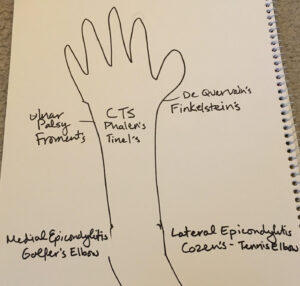
What’s the best way to increase NPTE scores? Do you think it’s just hunkering down and studying the NPTE content? While it’s good to have a foundation to draw upon for answering NPTE questions, the key to improving your NPTE score is effectively picking out the keywords. What does this mean?
Increasing Your NPTE Score
One of the crucial ways to increase your NPTE score is knowing how to be an effective test-taker and aiming higher than just the passing score. It’s understanding how you can take the information that is given to you and being able to figure out what’s important. It’s knowing that you are being tested beyond the academic recall and memorization; it’s actually answering clinically integrated reading comprehension multiple-choice questions. Points are gained by knowing how to take the information, correlate, and apply the knowledge beyond the study guides and textbooks.

Breaking the NPTE Question Down
When you are able to effectively pick out keywords, then you can better understand the anatomy of the NPTE question. Keywords can be found in the STEM, the question itself as well as in the multiple-choice answers. One of the keys to avoid making content mistakes on the exam is breaking down the keywords into simpler terms or associating them with easier words.
What Keywords?
Think of keywords as relevant clues to help or guide you to the answer. Keep in mind that not all of the information in the NPTE question will help you as there can be more background or “fluff” added. Sometimes, the other information may actually deter you from picking the correct answer. The key is whether you can determine what information is needed to answer the question that would result in higher NPTE scores.

Correlating the Keywords
While picking out the keywords, it helps to break them down into simpler terms, correlating them with information or examples. By doing this, it helps to reduce the overanalysis by keeping the information presented in the NPTE question at face value. Think of repeating back to the patient in simple terms what you heard them say based on the keywords. By correlating X = Y, this would improve your NPTE score.
Finding and Recognizing Keyword Patterns
There are keyword patterns both in NPTE questions and answers. Certain keywords can clue you in what system and content section you are working on at the moment. This helps to eliminate answers that wouldn’t relate to the question.
Here’s an example:
A patient has come to physical therapy for an evaluation of hand pain. The patient presents with decreased and painful grip strength and atrophy of the thenar eminence. What special test is MOST likely to be positive for this patient?
Let’s break this question down focusing on relevant keywords. In the first sentence, there’s hand pain. What does this mean? You know what body part to focus on which is the hand. So, anything not related to the hand would be wrong. Now, you can almost assume that this would be focusing on the Musculoskeletal system; however, wouldn’t know the content section.
Now the second sentence has the keywords, decreased and painful grip strength, and atrophy of the thenar eminence. What you can gather here are objective findings and this would correlate with the examination content section. You also can narrow your focus about the hand by correlating that thenar eminence is the thumb. From the other keyword clues, you would want to associate the symptoms to the particular condition and in this case, would be Carpal Tunnel Syndrome.
The last sentence, which is the STEM, asks about what special tests and the MOST likely positive result would be. This objective test would have to be associated with Carpal Tunnel Syndrome, otherwise would be wrong.
Now, let’s see the answer options:
1) Phalen’s
2) Finkelstein’s
3) Froment’s
4) Cozen’s
Here’s how correlating these special tests with what they are testing for can help lead you to the answer:
1) Phalen’s – Carpal Tunnel Syndrome
2) Finkelstein’s – De Quervain’s Tenosynovitis
3) Froment’s – Ulnar Palsy
4) Cozen’s – Lateral Epicondylitis
After correlating the special tests, now it’s easier to associate what part of the hand would be testing. The last answer can be eliminated as it doesn’t have to do with the hand. The third answer can be eliminated because it focuses on the pinky rather than the thumb. And the second answer can be eliminated because even though it focuses on the thumb, the other symptoms provided from the question wouldn’t correlate. So, the correct answer would be the first option. Now, if you knew right away that Phalen’s is associated with Carpal Tunnel Syndrome, you wouldn’t have to look at the other answers and improve your NPTE score.
Here’s how using the brain dump sheet can help by drawing things out.

Rushing Causes Missed Points
Keywords are missed when rushing through questions and answers. This is one of the easiest ways why NPTE scores go down. Have you ever reviewed a missed NPTE question and said “I knew the answer, I just didn’t see X”? If so, you’re definitely not alone; however, you want to be able to pick up on as many points as you can on the exam. To help gain points back, use the highlight feature as well as utilizing your brain dump sheet.
Let’s see how well you can pick out keywords and correlate them on the NPTE practice exams. With practice, you’ll be able to see how your NPTE scores and confidence can go up.

How is this similar to Typicalpt?
Therapy Exam Prep’s exams are to the FSBPT standard due to the actual training. Typicalpt.com hasn’t been through the FSBPT training.
I used Typical PT for the January exam and they have hard questions. They give free questions on their website and Instagram,
You’ll find that Therapy Exam Prep NPTE practice exams have plenty of Level 2 and Level 3 NPTE questions that focus more clinically than academically.